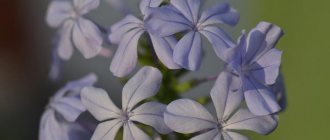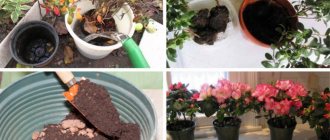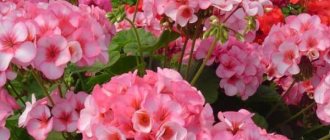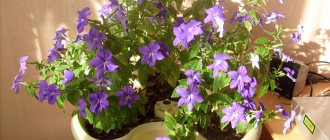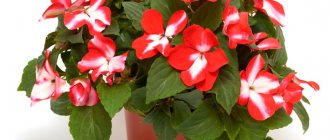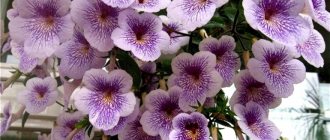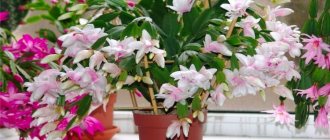Tetrastigma is a plant that is a wild grape. It is rapidly expanding in area. Its leaves are bright in color. The vine is flexible. The family to which the plant belongs is Vinogradov. The culture is growing in the southern part of the Earth. In particular, it can be found in Australia. In Russia, tetrastigma is grown as a houseplant.
It does not require special care. In flower beds, the crop looks good against the backdrop of bright flowers. The roots of the plant are branched, the shoots spread along the ground. The tetrastigma vine grows to a height of about one hundred centimeters. At home, the leaves are no more than three meters, but in natural conditions they reach fifty meters. Stems are dark green. Over time they become curved.
You can buy the Tetrastigma plant in nurseries or from gardeners who breed this plant.
Tetrastigma: description and characteristics
Tetrastigma: photo
In today's article we will tell you about an amazing plant, tetrastigma. This culture belongs to the Vinogradovs. There are more than 100 species in the genus; in its natural habitat, tetrastigma is found on different continents. However, under indoor conditions, this plant is very often grown as home grapes. Therefore, you can easily grow this beautiful vine in your apartment. The foliage of Tetrastigma is quite large and lobed in shape. In its natural habitat, this plant is found, as we noted earlier, on different continents. Moreover, it is important to note that in natural conditions it grows very intensively. The shoots reach tens of meters in length. Flowers are not particularly valued; indoor plants are grown to decorate your home with exotic vines. It is best, however, to shorten the shoots to a meter or 2-3 meters. Tetrastigma is restored very quickly, therefore, under favorable growing conditions, these vines can increase in length by almost 1 m per year.
Botanical description
Tetrastigma Voineriana , Voinier grape (lat. Tetrastigma voineriana) belongs to the Grape family (lat. Vitaceae) and is a large perennial vine with powerful stems and young shoots.
The leaves are bright green with prominent veins, covered with thick dark brown hair on the underside and glossy on the top. Their palm-shaped shape with 3-5 lobes is emphasized by their size. Their diameter reaches 25 cm.
Due to its massiveness, the Tetrastigma Voinier to metal supports. This will help protect the stems from damage, and will also allow you to give the desired shape to the vine itself. Blooms after a period of active growing season. The flowers are small.
Tetrastigma: care at home
Caring for this crop is easy. Therefore, even a novice gardener will be able to grow a whole greenhouse of tetrastigma at home. Lianas are considered unpretentious, but you will still need to follow certain agrotechnical rules. This culture is considered light-loving, so it is better to leave pots with plants on windowsills. But remember, despite the light-loving nature, sunlight should be diffused. Direct sunlight should not fall on the foliage, otherwise the plant may get burned. If we talk about temperature conditions, this plant is also classified as heat-loving. The air temperature should not be lower than + 23 degrees. However, this only applies to the spring-summer season. In winter, it is better to keep the plant cool, but there are also limitations here; the room temperature should not fall below + 12 degrees. If the temperature is too low, the leaves of the plants may fall off. It is also believed that this culture does not like drafts, so choose the right place where it is best to place the pot. The air humidity in the room should not be very high; usually, if you are comfortable in the living room, then the plant will be just as comfortable. However, it is still recommended to spray the foliage once every 6-7 days with a spray bottle, this way you will knock dust off the leaf plates and also moisten the shoots. However, this is done only when the room is warm; during a cool winter, it is not recommended to spray the leaves. If we talk about the watering regime, then you need to adhere to the following rule: the earthen lump in the pot should not dry out. It is best to water the plant about 2 times every 6-7 days in spring and summer. But during wintering, the watering regime will need to be adjusted; it is best to water the plants during this period once every 2 weeks. The soil in the pot should remain slightly moist, but do not overdo it with watering; in winter, excess moisture negatively affects the development of this crop. In order to plant indoor tetrastigma grapes, you will need to pour loose soil into the pot; it must be enriched with nutrients. If we talk about the level of acidity, then the soil should be either slightly acidic or neutral. You can easily prepare the soil mixture yourself. To do this, you will need to mix garden, turf and deciduous soil, add a little fertilizer there, lay drainage at the bottom of the container, make a hole in the pot, and pour the soil mixture into the container. Now you can plant. It is recommended to feed this crop quite often; this is done especially intensively in the summer and spring. Fertilizing is usually applied to the soil once every 2 weeks. If indoor Tetrastigma grapes develop very intensively, then the crop will need to be fed more often; experienced gardeners apply fertilizer to the pot once a week. At the same time, it is important to alternate organic and mineral fertilizers; the ready-made mixture can be purchased at a farm store.
Lighting and temperature
Tetrastigma Voinier needs a lot of bright sunlight. Its deficiency leads to strong elongation of shoots, which in turn reduces the decorative value of the plant. The southeastern and eastern parts of the house or premises will be especially welcome by tetrastigma.
The temperature for the plant should be maintained at +22 °C. Closer to the winter period, the indicator can be lowered. During the cool season it is necessary to keep it at a temperature of +12°C. If temperatures are too high, vine leaves may lose their elasticity. This phenomenon can be adjusted by the number of waterings.
The optimal temperature for Tetrastigma Voinier during the rest period in the room is maintained at +14+22°C, but it should not be less than +12°C.
Tetrastigma: transplanting and pruning
Tetrastigma: photo
It is believed that at first, tetrastigma vines grow very intensively, so the plants will need to be replanted, imagine, more than once a year. But mature bushes will need to be replanted less frequently, usually once every few years. It is believed that the tetrastigma plant tolerates this procedure well, but you should always choose a new pot, so that it is several times larger than the old one; when you transplant an adult bush into a real tub, quite large and voluminous, then do not replant the plant in the future need to. In order for indoor tetrastigma grapes to grow and develop intensively, simply periodically change the top layer of soil, and also add fresh fertilizer to the soil. But cutting off the shoots is not recommended at all. But if you want to form a crown, then rest assured, this plant tolerates this procedure normally. However, experienced gardeners recommend pruning the vines when the bush reaches the desired size; this is done in order to restrain its development in the future. As you remember, in its natural habitat this bush can reach tens of meters in length; you must agree that even the most avid gardener does not want to turn his apartment into a jungle. That is why it is recommended to trim the bushes. However, it is undesirable to touch young foliage with your hands, much less cut it off. Otherwise, the shoots may disappear altogether. It is recommended to install supports near mature bushes, but it is not advisable to do this in advance.
Appearance and features
Indoor grapes are a beautiful and unpretentious plant, very popular among beginners and experienced gardeners. Tetrastigma leaves are large, five-lobed, decorated with teeth along the edges . Their original two-tone coloring is noteworthy. The leaves are reddish-brown below, with a slight whitish coating, and dark green and shiny above. The flowers of the plant are very inexpressive , and in apartment conditions, tetrastigma blooms extremely rarely.
For successful development, indoor grapes require support . The vines are attached to it with tendrils. As supports, you can use wooden, plastic or metal gratings, vertically stretched fishing lines or ropes. In a short period of time, the vines will entwine the proposed surface, turning it into a real green wall.
Indoor grapes tetrastigma: reproduction
Most often, the tetrastigma liana is propagated by cuttings; this is quite easy and simple to do. In order to select the desired shoot, use the tip of the shoot. Each cutting must have a pair of leaves, as well as an active bud. From below, it is recommended to treat the cuttings with a growth stimulator so that the root system develops more intensively. In order for the cuttings to take root, they will need to be placed in a specially prepared soil mixture with the addition of peat and sand. You can simply put the cuttings in water, and thus the root system will form. In order for the shoots to take root faster, cover the top of the container with the cuttings with glass or film. This is done in order to create a favorable microclimate. When the shoots take root, they can be planted in separate containers. The soil mixture should be the same as for replanting plants. It is recommended to add a little thorn and deciduous soil to the garden soil. Usually cuttings take root fairly quickly.
Humidity and watering
Humidity is important Tetrastigma Voinier At moderate temperatures this figure can be maintained at 55%. If necessary, Tetrastigma Voignier is sprayed with warm water in the evening. Water the plant abundantly during the active growing season throughout the summer. If the soil surface is actively drying out, then the amount of water is increased. Water the plant in the evening. Use settled water that is 2 to 3 degrees warmer than the room temperature.
In autumn and winter, when the amount of light decreases and air humidity decreases, the plant goes into a period of forced dormancy. During a forced dormant period, from October to February, the plant is watered moderately, but the substrate should not be allowed to dry out completely.
Pests and diseases
Tetrastigma plant: photo
Tetrastigma flower is considered a fairly stable crop. Therefore, pests and diseases are not terrible for this plant. But if you do not care for your houseplant as it should, then you may well encounter various difficulties and problems. The air humidity in the room must be at an average level. If the humidity is low, then spider mites may well appear on the bush. As you know, these harmful insects drink juice from the leaves, which means that over time the shoots and leaves die without moisture and nutrients. If you notice thin cobwebs and a powdery coating on the leaf plates, this indicates the appearance of these insects. However, very often a regular shower helps to cope with these pests. The water must be warm, but if this does not help, you can treat the foliage and shoots of the plant with insecticides. Usually after such “chemistry” all insects disappear. Another pest that often settles on the plant is the mealybug. If you notice that a whitish coating has appeared on the foliage, this indicates the appearance of this insect. Wipe the leaves with a slightly dampened cloth, removing this plaque; after this, it is advisable to spray the plants with insecticides; you can also use traditional methods, for example, treat the foliage with garlic tincture. If you violate the rules of agricultural technology, then other problems may arise for this crop. If you notice that the stems have begun to stretch, this indicates poor lighting in the room. But if the light, on the contrary, is too bright, then very often yellow spots begin to form on the grape leaves. This sign also often indicates that you are using fairly hard water for irrigation. If the plant is exposed to low temperatures, then black spots may form on the foliage and shoots.
Types of tetrastigma with photos
Tetrastigma of Voinier
The most popular species for gardeners in mid-latitudes is Tetrastigma vuanye. It is a large vine that becomes woody over time and is an evergreen plant. Petiolate palmate leaves are dark green, covered with hairs below. When grown at home, the shrub hardly blooms, but small pale green flowers appear from time to time.
Tetrastigma lanceolate
Tetrastigma lanceolata is also grown by gardeners, but much less frequently. Unlike Wuanye tetrastigma, the leaves of this species are more massive and dark green in color. In other respects, however, the two species are very similar.
Maintenance and care
Conditions
Otopharynx fish, like other cichlids, prefer spacious aquariums.
The minimum volume for a pair of fish is 80 liters. It is recommended to keep them in a small group consisting of females and a dominant male. A powerful filter, continuous aeration and weekly water changes are required. Water parameters: temperature – 24-27°C, hardness – 10-20°dH, acidity – 7.5-8.5 pH.
It is advisable to create a spacious swimming area in an aquarium with tetrastigma and tetraspilus, with sandy soil and some hiding places. A small number of plants is welcome (for average water hardness, Vallisneria, Saggitaria, and Elodea serrata may be suitable).
Lithobates, lithobytes or red-topped otopharynx prefers rockier terrain with more caves and tunnels.
Feeding
In the aquarium, representatives of the genus Otopharynx are unpretentious to food; they eat both live and frozen, as well as specialized food. Bloodworms are allowed to be given only occasionally and in small quantities. The best option would be to alternate protein and plant foods. Overfeeding should be avoided.
Compatibility with other fish
Otopharynx is considered a fairly peaceful aquarium resident. Aulonocara, Copadichromis, and Protomelas are suitable neighbors for it. It is recommended to avoid proximity to Mbuna cichlids, giving preference to the inhabitants of Lake Malawi. However, at first it is advisable to carefully monitor the grinding of fish, since sometimes the otopharynx is quite capable of becoming an aggressor and greatly displacing other species.
The main difficulties in growing
Tetrastigma, like many other plants, is very often attacked by spider mites, aphids and nematodes. Therefore, we must not forget to carry out preventive measures from time to time with special preparations that are sold in any specialized store. Just follow the dosage instructions, especially when doing the treatment for the first time.
Below are the most common flower problems that arise due to improper care.
The leaves are becoming much lighter than usual, and the shoots have begun to stretch. The plant does not have enough light. You can replace natural light by using a fluorescent lamp.
Interesting facts about tetrastigma
This plant has a very beneficial effect on human energy and supports any good endeavors. Tetrastigma purifies the air in the room and fills it with positive energy. If the owner or a person who spends a long time in the room where “home grapes” grow is lazy, then the plant encourages work and helps to complete the necessary work to achieve positive results. It can also help improve a person's relationships with other people. This plant is very beneficial for the health of people present in the room: it establishes the necessary level of energy, helps maintain flexibility of the body and mind (since tetrastigma shoots can take on any form), and helps speed up the recovery process after illnesses. This plant also helps protect against the effects of negative energy flows - evil eye, damage, etc. Promotes spiritual growth and gaining self-confidence. If a phytowall or arch is created from tetrastigma over a person’s bed, then sleep becomes calm and, upon waking up, the person feels rested and gained strength.
Sources
- https://selo.guru/rastenievodstvo/dekorativnolistvennye/liany/tetrastigma-vuane.html
- https://sad-doma.net/houseplants/decorative-leaf/liany/tetrastigma-pravila-uhoda.html
- https://zakupator.com/dom/tetrastigma.html
- https://room-plant.ru/komnatnye-rasteniya/ampelnye-rasteniya/uhod-v-domashnih-usloviyah-za-rasteniem-tetrastigma/
- https://rastenievod.com/tetrastigma.html
- https://tutknow.ru/garden_and_orchard/6005-tetrastigma-rekomendacii-po-vyraschivaniyu.html
- https://ogorodnash.ru/tetrastigma/
[collapse]


